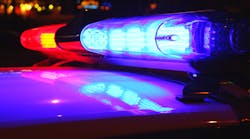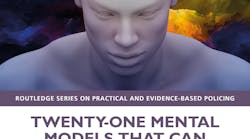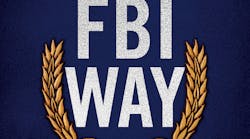Getting the image just right can be a daunting task. Nowhere is this more evident than visually recording a crime scene - no matter how intense. The recently published second edition of "Advanced Crime Scene Photography" looks to help crime scene photographers capture the truth.
The book offers tips on everything from creating compelling photos on a limited budget to the photography of Luminol reactions. It also features a new chapter on photographing fire scenes, presenting solutions to problems commonly faced by fire investigators and includes the addition of review questions and photography assignments at the end of each chapter. To top it all off, it contains more than 250 full-color images and photographs.
Mark Listewnik, Forensic Science Senior Editor, of the publishing company CRC Press spoke with the author, Chris Duncan.
ML: Hi, Chris, thanks for taking the time to talk with us about your book.
Hello, You're welcome. Thank you for letting me tell you and others about the Second Edition of Advanced Crime Scene Photography
ML: So, how many years have you been working and photographing crime scenes and how did you start out?
I have been in law enforcement for 27 years and working crime scenes for the last 17 years. When I joined the police department, I didn't even know what a crime scene investigator was. However, as I began to see more and more crime scenes as a first responder, I also began to see the value of processing a scene thoroughly and professionally. Eventually I was able to transfer into the Crime Scene Unit and have never looked back.
ML: Now I know there are thousands of books on photography but hardly any—just a handful really—on crime scene photography. I know you go into this in detail in the book but what would you say are the primary differences between traditional or artistic photography versus crime scene photography?
The science of photography, physics of light, and composition are actually quite similar between the artistic world and the world of law enforcement. The major difference is that photographic images destined to be utilized in a court of law must be complete, true, and accurate. Artistic photographers can take a creative license with their images, but crime scene investigators must strive to represent the scene and the evidence in a true and accurate manner. However, they can still be creative in the way they examine a particular composition in order to get the best and most accurate lighting, as well as an engaging and informative composition.
ML: The new edition has a lot of new coverage, I understand. Can you point out some of what you’ve added and included in this edition—for those who may already own the previous book or may even be new to the field? What are some of the highlights?
I have added a new chapter on fire and arson photography. After teaching a number of photography schools for arson and fire investigators, I was informed that there was a real lack of information on arson photography. Consequently, I have added an entire chapter of the specific challenges faced by fire investigators. Another major addition to the text is the addition of test questions and practical exercises at the end of each chapter. Developing into a quality photographer takes an understanding of the camera, how it perceives light, and lots and lots of practice with the camera. The questions are designed to help investigators understand what the camera is seeing and the exercises are designed to give the reader practice with their equipment. As a whole, one of the common compliments about the first edition to my book was the idea that it was designed and written for those that work in the field and that the techniques discussed were easily understood. I tried to continue that idea into the second edition, expanding the "step by step" instructions so that the photographic concepts could be copied.
ML: If there was one thing that you want people to take away from the book, what would it be?
In a single sentence: "The value of completeness always outweighs to cost of film (or digital storage space).” I was taught that simple adage as a rookie officer and I have always lived by that theory. If it takes a photographer ten attempts to get the best photograph, then it takes ten photographs. If something can be seen, it can be photographed. It may take a little planning and organization, but I believe there are actually very few items that are found at a crime scene that cannot be photographed (if any at all). I will always remember a particularly difficult photograph I had to record at the scene of an officer-involved shooting in which the officer was killed in the line of duty. I must have taken 30 photographs in the attempt to get one image of value. Eventually, I was able to get everything right and an outstanding photograph of the shooting's laser reconstruction was obtained. I never gave up and that is what I want from my readers. Never give up on recording the best possible photographic image.


